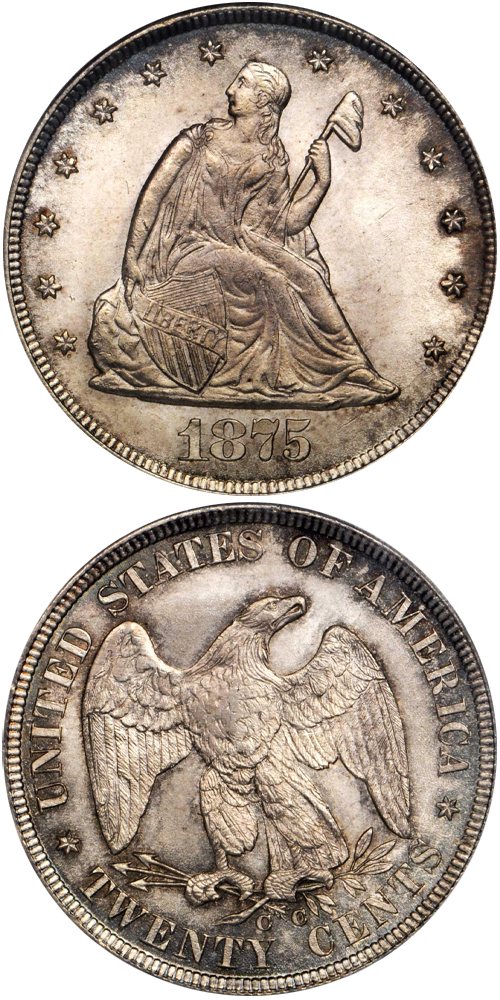1875-CC Twenty Cent
Rusty Goe: Excitement rippled through the Carson City Mint in early March 1875, when it was announced that President Ulysses S. Grant had signed into law Nevada's U.S. Senator John P. Jones's twenty-cent piece bill. James Crawford told the local press that he would present "the first piece of that denomination coined at this Mint to Senator J.P. Jones, the originator of the idea of making a coin of this kind."
At a special ceremony at the mint, on June 1, 1875, attended by reporters and local dignitaries, Crawford presented the first twenty-cent piece delivered by Coiner W. Hy Doane to a delighted Senator Jones. All told, Doane struck 3,290 examples of this new denomination in June. His replacement, Levi Dague, stamped another 133,000 pieces in the second half of the year, bringing the tally for 1875 to 133,290. Dague would go on to strike the noteworthy run of 10,000 twenty-cent pieces bearing the "CC" mintmark in March 1876, after which no other examples of this denomination would be struck for circulation, as Congress resolutely repealed the generally scorned twenty-cent piece act.
Q. David Bowers: In Carson City production of the new denomination began on June 1, 1875. Most pieces were released into circulation where they found wide use, at least for several years. Today, however, examples range from scarce to rare in really low grades such as Good and Very Good, indicating that they probably were scarce in circulation a decade or so after their release. The dies were spaced a little farther apart than they should have been, with the result that nearly all 1875-CC twenty-cent pieces are lightly struck at the top of the wings, particularly on the upper left. A little known fact is that the word LIBERTY is in relief, rather than incuse, on this denomination, causing it to wear quickly. A twenty-cent piece that was in circulation for just a few years was apt to have BER, the center letters, worn away. In contrast, a dime of the era could be worn down to VG or even lower and still have LIBERTY completely visible.
The example to the left was sold by Stack's Bowers Galleries in the February 2015 Americana Auction, where it realized $23,500.






